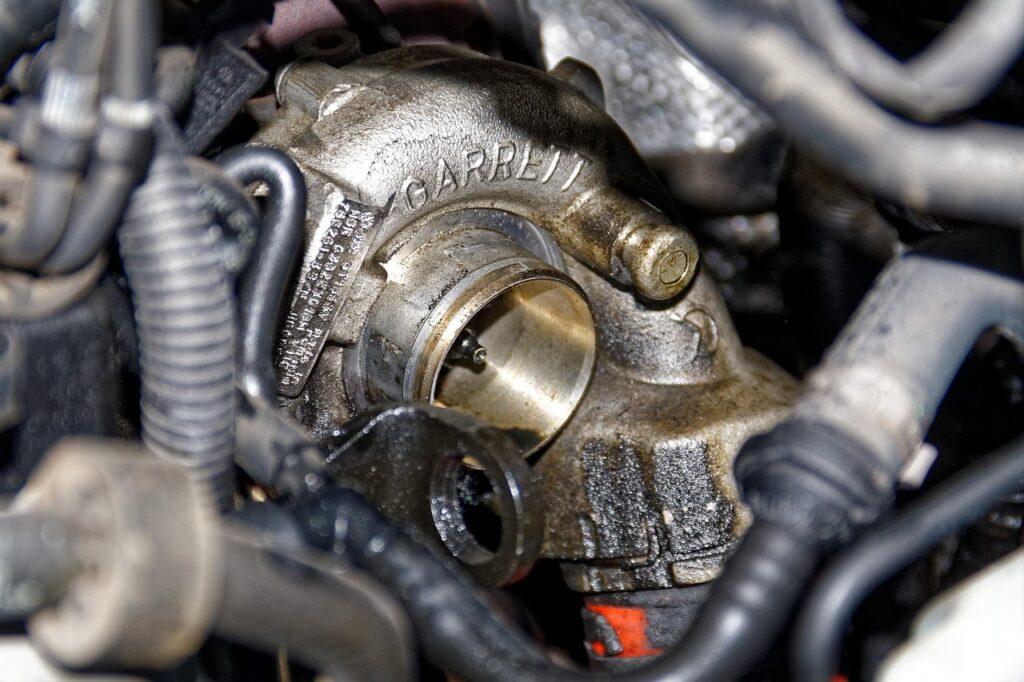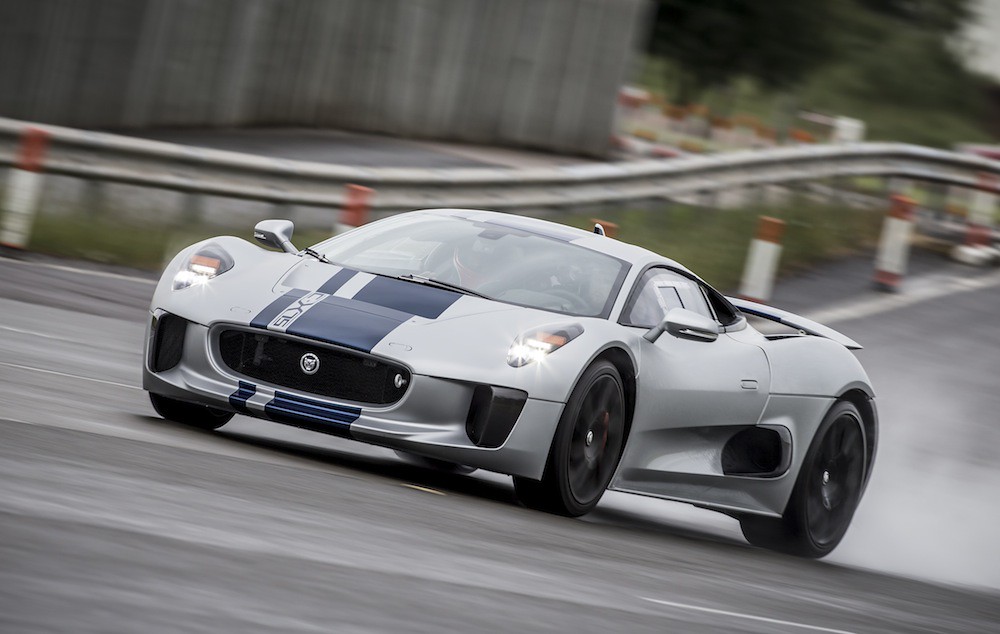Turbocharging has undeniably transformed the automotive world, offering an enticing promise: small displacement efficiency with big power output. Once primarily reserved for high-performance builds, turbos are now ubiquitous, gracing everything from sedans and SUVs to economy hatchbacks. On paper, it sounds like a win-win: efficient power with thrilling performance.
However, the reality of turbocharging is often more complex than simple spec sheets suggest. The very components that deliver that impressive boost also introduce additional complexity, generating higher temperatures and pressures. This increased stress can significantly impact long-term reliability, making many question if modern turbocharged engines can truly stand the test of time compared to simpler, naturally aspirated powerplants.
But here’s the fascinating truth: not all turbocharged engines are created equal. While some have indeed earned a reputation for being temperamental, others are engineering marvels, meticulously designed to shrug off years of abuse and accumulate hundreds of thousands of miles with remarkable resilience. What separates these legends from the letdowns? It often comes down to fundamental design philosophy, superior build quality, and a commitment to real-world durability testing that prioritizes longevity as much as outright power figures.
**The Engines That Refuse to Die: Turbocharged Legends of Longevity**
Reliability and turbocharging might seem like an unlikely pairing to some, but a select group of engines has unequivocally proven that serious power and serious longevity can indeed coexist. These aren’t just motors engineered for short bursts of track-day fun; they were built with an eye toward lasting for decades. Across car communities, these engines are revered because they endure relentless abuse, maintain boost, and run strong long after other vehicle components have succumbed to age.
What’s the secret sauce behind these extraordinary engines? Typically, it’s a potent combination of conservative engineering and truly robust components. Features like forged pistons, beefy connecting rods, robust oiling systems, and cooling setups handle countless heat cycles without faltering. Manufacturers like Toyota, Volvo, and even Volkswagen invested significant thought into ensuring these engines were practically indestructible under boost. Another critical factor is their tunability; many of these motors not only survive stock use but genuinely thrive when modified, enhancing their reputation for unmatched durability.
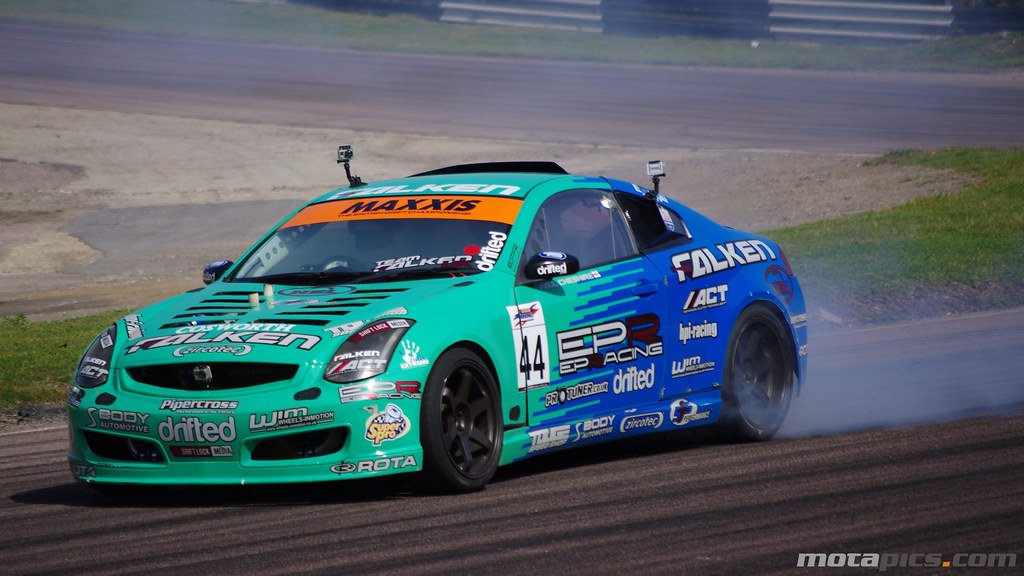
1. **Toyota 2JZ-GTE**If there’s a definitive gold standard for reliable turbo engines, the Toyota 2JZ-GTE holds that title with undisputed authority. Introduced in the 1990s and famously powering the iconic Toyota Supra, this inline-six, twin-turbocharged motor has achieved truly legendary status. Its unparalleled reputation stems from one fundamental characteristic: it’s practically indestructible.
The engine block is crafted from robust cast iron, allowing the 2JZ to tolerate insane amounts of boost without cracking. Toyota fitted the bottom end with forged steel crankshafts and exceptionally beefy connecting rods, rendering the assembly incredibly robust. Even with stock internals, this motor reliably handles over 700 horsepower. Unlike many turbo engines that show trouble after 100,000 miles, a properly maintained 2JZ frequently sees 200,000 to 300,000 miles with minimal issues.
What truly elevates the 2JZ-GTE is its immense aftermarket support and inherent tunability. Enthusiasts worldwide have pushed this engine to astronomical power figures exceeding 1,000 horsepower with upgraded turbos and fueling systems, yet the fundamental block remains steadfastly reliable. Toyota’s foresight in engineering such a high safety margin solidified its position as an absolute favorite among tuners, racers, and anyone seeking performance with peace of mind.
Car Model Information: 2024 Toyota Supra 3.0 Premium
Name: Toyota Supra
Caption: Toyota GR Supra (J29/DB)
Manufacturer: Toyota
Aka: unbulleted list
Production: unbulleted list
Class: Sports car
BodyStyle: fastback,coupé
Layout: Front-engine, rear-wheel-drive layout
Predecessor: Toyota Celica (A20)
Categories: 1980s cars, 1990s cars, 2000s cars, 2010s cars, 2020s cars
Summary: The Toyota Supra (Japanese: トヨタ・スープラ, Hepburn: Toyota Sūpura) is a sports car and grand tourer manufactured and developed by the Toyota Motor Corporation beginning in 1978. The name “supra” is a definition from the Latin prefix, meaning “above”, “to surpass” or “go beyond”.
The initial four generations of the Supra were produced from 1978 to 2002. The fifth generation has been produced since March 2019 and later went on sale in May 2019. The styling of the original Supra was derived from the Toyota Celica, but it was longer. Starting in mid-1986, the A70 Supra became a separate model from the Celica. In turn, Toyota also stopped using the prefix Celica and named the car Supra. Owing to the similarity and past of the Celica’s name, it is frequently mistaken for the Supra, and vice versa. The first, second and third generations of the Supra were assembled at the Tahara plant in Tahara, Aichi, while the fourth generation was assembled at the Motomachi plant in Toyota City. The 5th generation of the Supra is assembled alongside the G29 BMW Z4 in Graz, Austria by Magna Steyr.
The Supra traces much of its roots back to the 2000GT owing to an inline-6 layout. The first three generations were offered with a direct descendant to the Crown’s and 2000GT’s M engine. Interior aspects were also similar, as was the chassis code “A”. Along with this name, Toyota also included its own logo for the Supra. It was derived from the original Celica logo, being blue instead of orange. This logo was used until January 1986, when the A70 Supra was introduced. The new logo was similar in size, with orange writing on a red background, but without the dragon design. That logo, in turn, was on Supras until 1991 when Toyota switched to its current oval company logo. The dragon logo was a Celica logo regardless of what colour it was. It appeared on the first two generations of the Supra because they were officially Toyota Celicas. The dragon logo was used for the Celica line until it was also discontinued.
In 1998, Toyota ceased sales of the fourth-generation Supra in the United States. Production of the fourth-generation Supra for worldwide markets ended in 2002. In January 2019, the fifth-generation Supra, which was co-developed with the G29 BMW Z4, was introduced.
Get more information about: Toyota Supra
Buying a high-performing used car >>>
Brand: Toyota Model: Supra
Price: $59,995 Mileage: 1,454 mi.
Read more about: Unlock the Hidden Gems: 14 Underrated JDM Cars from the 2000s Every Enthusiast Should Collect

2. **Volvo B230FT**While the Volvo B230FT might not command the same global spotlight as Japanese performance engines, among dedicated enthusiasts, it holds revered status as one of the toughest turbocharged engines ever constructed. Introduced in the mid-1980s, this 2.3-liter inline-four became the workhorse for Volvo’s robust 700 and 900 series cars. Despite its humble origins, it quickly earned a reputation for being an unyielding workhorse.
The B230FT’s secret weapon lies in its exceptionally overbuilt bottom end, a design philosophy that prioritized durability. Featuring a sturdy cast-iron block and a robust forged crankshaft, this engine was engineered from the ground up to last. Volvo designed it to withstand long highway miles, extreme climatic conditions, and even less-than-ideal maintenance habits. Turbocharging did not compromise its inherent reliability, largely because the motor was tuned conservatively, producing 160–180 horsepower in stock configuration.
Even today, it’s common to find high-mileage Volvos from decades past, still powered by their original B230FT engines, confidently chugging along with over 300,000 miles. These engines are renowned for not easily blowing head gaskets, nor typically spinning bearings even under moderate boost pressures—a frequent failure in other turbo motors. The B230FT is an underappreciated legend, proving how a turbocharged engine can truly last forever, reinforcing Volvo’s reputation for building “cars that last a lifetime.”
Car Model Information: 2019 Lexus GX 460 Premium
Name: Volvo 900 Series
Manufacturer: Volvo Cars
Production: 1990–1998,632,710 produced
Platform: P90
Class: Luxury vehicle#Mid-size luxury/executive cars
Layout: Longitudinal engine,FR layout
Predecessor: Volvo 700 Series
Successor: Volvo V70#Third
Designer: Rolf Malmgren, Håkan Malmgren
Categories: Articles with short description, CS1 Italian-language sources (it), CS1 Swedish-language sources (sv), Cars discontinued in 1998, Cars introduced in 1990
Summary: The Volvo 900 Series is a range of executive cars produced by the Swedish manufacturer Volvo Cars from 1990 to 1998. The 900 Series was introduced in 1990 to replace the 700 Series from which it derived. Prior to the end of its production, the 960 was renamed as the Volvo S90 (saloon) and Volvo V90 (estate), and the 940 was renamed 940 Classic, becoming the last rear-wheel-drive cars from Volvo, until the 2023 Volvo XC40 Recharge Pure Electric.
Visible differences between the 700 and the 900 Series included redesigned rear styling of the saloon models (late 700 estates and early 900 estates are visually identical). The 960 was introduced in 1991 along with a new family of modular engines, and then was substantially revised for the 1995 model year, improving the handling. The range was augmented by the new Volvo 850 in 1991. The last of the 900s was sold in 1998. Some 900 Series were built as chassis for ambulances and hearses after the main production run had been completed.
Get more information about: Volvo 900 Series
Buying a high-performing used car >>>
Brand: Volvo Model: 700 and 900 series
Price: $30,991 Mileage: 72,932 mi.
Read more about: Turbocharged Engines Unveiled: Decoding Turbo Lag, Engineering Solutions, and The Legacy of Reliability vs. Catastrophic Failure
3. **Mitsubishi 4G63T**For anyone with an interest in rally racing or hardcore tuner culture, the Mitsubishi 4G63T is synonymous with performance and rugged durability. This iconic 2.0-liter turbocharged inline-four engine is the beating heart of legends like the Mitsubishi Lancer Evolution and the Eclipse GSX. What truly makes the 4G63T stand out is its almost ridiculous toughness, especially for a small-displacement turbo motor.
Mitsubishi’s engineers approached the 4G63T with an unwavering focus on resilience, endowing it with a robust cast-iron block, a forged crankshaft, and a beefy bottom end explicitly designed to absorb significant abuse. In its factory iterations, this powerhouse produced 190 to 280 horsepower. However, tuners quickly discovered its true potential: it could comfortably handle far more. With straightforward upgrades, achieving 500 horsepower on stock internals became readily attainable, with built setups pushing past 1,000 horsepower.
The engine’s legendary status was further solidified through its dominance in rally racing, where uncompromising reliability under extreme stress is non-negotiable. The 4G63T consistently demonstrated its ability to withstand brutal conditions—intense heat, dust, high revs, and constant boost pressures—yet unfailingly continued to perform. Of course, diligent maintenance plays a crucial role in its longevity, but when properly cared for, it proves to be nearly bulletproof. The 4G63T stands as one of the most thoroughly proven turbocharged engines ever manufactured—a harmonious blend of raw power, exceptional tunability, and insane durability.
Car Model Information: 2019 Lexus GX 460 Premium
Name: Mitsubishi Lancer Evolution
Caption: Mitsubishi Lancer Evolution X
Manufacturer: Mitsubishi Motors
Production: 1992–2016
BodyStyle: sedan (car),station wagon
Assembly: Japan:,{{blist,Okazaki, Aichi,Kurashiki, Okayama
Class: Sport compact car
Layout: Front-engine, four-wheel-drive
Engine: Straight-four engine,Mitsubishi Sirius engine#4G63,Mitsubishi 4B1 engine#4B11T
Transmission: Twin Clutch SST,5-speed automatic (2002, 2006–2007),manual transmission,6-speed manual (2003–2008)
Predecessor: Mitsubishi Galant VR-4
Related: Mitsubishi Lancer,Mitsubishi Lancer WRC,Mitsubishi Racing Lancer
Categories: 2000s cars, 2010s cars, All-wheel-drive vehicles, All Wikipedia articles in need of updating, All articles needing additional references
Summary: The Mitsubishi Lancer Evolution, popularly referred to as the “Evo”, is a sports sedan and rally car based on the Lancer that was manufactured by Japanese manufacturer Mitsubishi Motors from 1992 until 2016. There have been ten official versions to date, and the designation of each model is most commonly a Roman numeral. All generations use two-litre intercooled turbo inline four-cylinder engines and all-wheel drive systems.
The Lancer was originally intended only for Japanese markets, but demand on the “grey import” market led the Evolution series to be offered through Ralliart dealer networks in the United Kingdom and in various European markets from around 1998. Mitsubishi decided to export the eighth generation Evolution to the United States in 2003 after witnessing the success Subaru had in that market the previous year with the Subaru Impreza WRX.
All domestic-market versions, until the release of the Evolution IX in 2005, were limited by a gentlemen’s agreement between Japanese car manufacturers to advertise no more than 280 PS (206 kW; 276 hp). However, sources say Mitsubishi had already been producing cars with more power but had been underrating the official power outputs in order to comply with the agreement. Therefore, each subsequent version has unofficially evolved above the advertised power figures, with the Japanese-market Evolution IX reaching an alleged output of around 320 PS (235 kW; 316 hp). Various special versions available in other markets, particularly the UK, have official power outputs up to 446 PS (328 kW; 440 hp).
The tenth and final generation of the Lancer Evolution, the Evolution X, was launched in Japan in 2007, and overseas markets in 2008. The Evolution X was produced for almost 10 years until Mitsubishi retired the Lancer Evolution in April 2016.
Get more information about: Mitsubishi Lancer Evolution
Buying a high-performing used car >>>
Brand: Mitsubishi Model: Lancer Evolution
Price: $30,991 Mileage: 72,932 mi.
Read more about: Unlock the Hidden Gems: 14 Underrated JDM Cars from the 2000s Every Enthusiast Should Collect
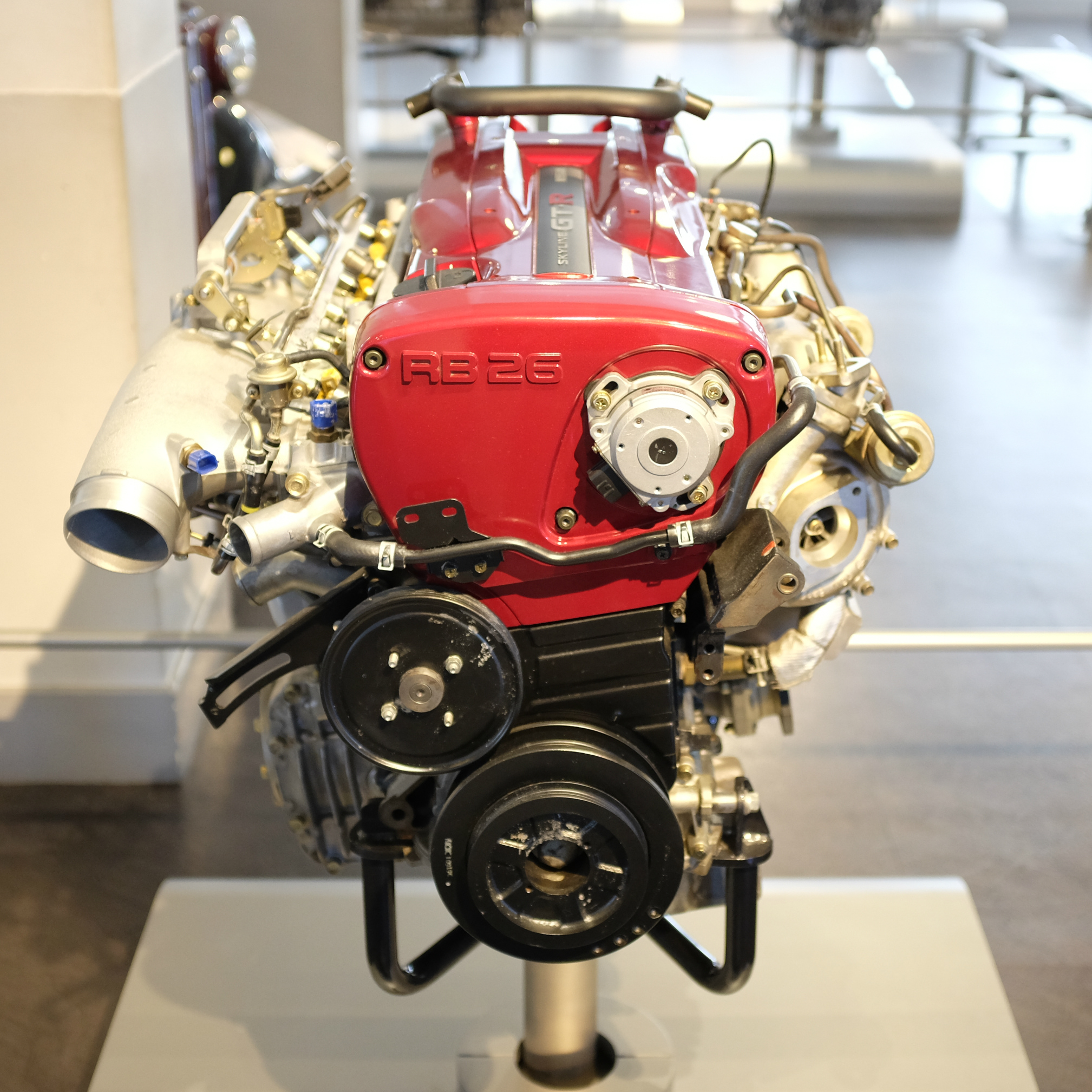
4. **Nissan RB26DETT**Another cornerstone of Japanese performance engineering that refuses to fade into obscurity is the Nissan RB26DETT. Best known as the formidable heart of the R32, R33, and R34 generations of the iconic Skyline GT-R, this 2.6-liter inline-six twin-turbo motor has etched its name into automotive history as a symbol of power, precision, and enduring strength.
Conceived in the late 1980s with a singular vision of racing dominance, the RB26DETT was engineered to be exceptionally robust. It featured a heavy-duty cast-iron block, fortified with six-bolt main caps, and a closed-deck design, all contributing to incredible inherent strength. Although its factory output was famously limited to around 276 horsepower due to Japan’s “gentlemen’s agreement,” the motor’s true capabilities far exceeded this figure. Much like the 2JZ, the RB26DETT quickly soared to fame for its remarkable ability to handle truly massive power increases, often reaching 500–600 horsepower with stock internals and four-digit figures with a built bottom end.
In terms of reliability, early versions of the RB26 did exhibit a known weak spot in their oiling system, particularly under sustained high-performance conditions. This issue was promptly addressed and largely resolved through upgraded oil pumps and other well-documented modifications. Once these enhancements were sorted, the RB26 engine became nearly indestructible. The RB26DETT is far more than just an engine; it’s a profound cultural icon that solidified Nissan’s formidable place in motorsport history and proved that turbocharged engines could be an exceptional combination of brutally powerful performance and incredibly long-lasting durability.
Car Model Information: 2019 Lexus GX 460 Premium
Name: Nissan Skyline GT-R
Caption: 1999 Nissan Skyline GT-R V·spec (BNR34)
Manufacturer: Nissan
Production: unbulleted list
Assembly: unbulleted list
Class: Sports car
Related: unbulleted list
Transmission: unbulleted list
Successor: Nissan GT-R
Categories: 1970s cars, 1980s cars, 1990s cars, 2000s cars, 24 Hours of Le Mans race cars
Summary: The Nissan Skyline GT-R (Japanese: 日産・スカイラインGT-R, Hepburn: Nissan Sukairain GT-R) is a Japanese sports car based on the Nissan Skyline range. The first cars named “Skyline GT-R” were produced between 1969 and 1972 under the model code KPGC10, and were successful in Japanese touring car racing events. This model was followed by a brief production run of second-generation cars, under model code KPGC110, in 1973.
After a 16-year hiatus, the GT-R name was revived in 1989 as the BNR32 (“R32”) Skyline GT-R. Group A specification versions of the R32 GT-R were used to win the Japanese Touring Car Championship for four years in a row. The R32 GT-R also had success in the Australian Touring Car Championship, with Jim Richards using it to win the championship in 1991 and Mark Skaife doing the same in 1992, until a regulation change excluded the GT-R in 1993. The technology and performance of the R32 GT-R prompted the Australian motoring publication Wheels to nickname the GT-R “Godzilla” in its July 1989 edition. Wheels then carried the name through all the generations of Skyline GT-Rs, most notably the R34 GT-R, which they nicknamed “Godzilla Returns”, and described as “The best handling car we have ever driven”. In tests conducted by automotive publications, the R34 GT-R covered a quarter of a mile (402 metres) in 12.2 seconds from a standing start time and accelerated from 0–100 km/h (0–62 mph) in 4.4 seconds.
The Skyline GT-R became the flagship of Nissan performance, showing many advanced technologies including the ATTESA E-TS all-wheel drive system and the Super-HICAS four-wheel steering. Today, the car is popular for import drag racing, circuit track, time attack and events hosted by tuning magazines. Production of the Skyline GT-R ended in August 2002. The car was replaced by the GT-R (R35), an all-new vehicle based on an enhanced version of the Skyline V36 platform. Although visibly different, the two vehicles share similar design features and are manufactured in the same factory.
The Skyline GT-R was never manufactured outside Japan, and the sole export markets were Hong Kong, Singapore, Australia vroom
Dnndand New Zealand, in 1991, and the UK (in 1997, due to the Single Vehicle Approval scheme). They are also popular across the world as used Japanese imports.
Despite this, the Skyline GT-R has become an iconic sports car as a grey import vehicle in the Western world (mainly the United Kingdom, Australia, New Zealand, South Africa, Ireland, Canada, and the United States). It has become notable through pop culture such as The Fast and the Furious, Initial D, Shakotan Boogie, Tokyo Xtreme Racer, Wangan Midnight, Need for Speed, Forza, Driving Emotion Type-S, Test Drive, and Gran Turismo.
In 2019, Nismo announced that it would resume production of spare parts for all generations of the Skyline GT-R, including body panels and engines.
Get more information about: Nissan Skyline GT-R
Buying a high-performing used car >>>
Brand: Nissan Model: Skyline GT-R
Price: $30,991 Mileage: 72,932 mi.
Read more about: Unlock the Hidden Gems: 14 Underrated JDM Cars from the 2000s Every Enthusiast Should Collect
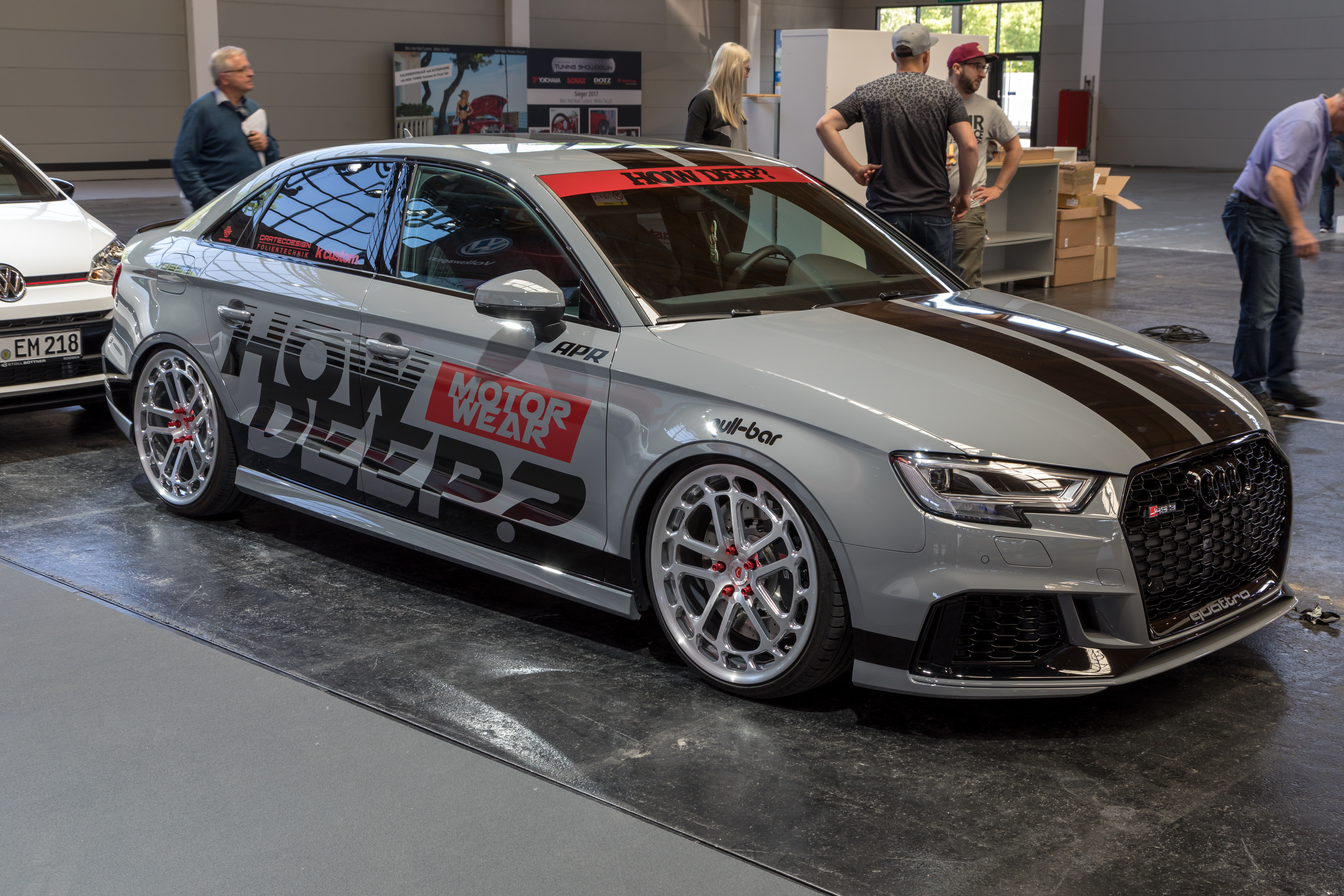
5. **Volkswagen/Audi 1.8T**It might genuinely surprise some to discover a VW/Audi engine gracing this esteemed list of turbocharged legends, especially given the more recent reliability woes associated with some of their later turbo offerings. However, the venerable 1.8T unequivocally deserves its place and full recognition. Introduced in the mid-1990s, this 1.8-liter turbocharged inline-four engine was a prolific powerplant, found under the hood of a vast array of vehicles, from the Audi A4 to the VW Jetta, Passat, and even the sporty TT. Over its production run, it steadily built a reputation for being far tougher and more resilient than anyone anticipated.
The 1.8T’s inherent durability stemmed from its robust engineering foundations. It featured a sturdy cast-iron block, a design choice that bestowed upon it longevity and resistance to stress that many modern aluminum-block turbos simply lack. In its stock configurations, the engine delivered 150 to 225 horsepower, but its real strength was its extraordinary receptiveness to tuning. With straightforward upgrades, the 1.8T could effortlessly produce 300–400 horsepower, often without requiring an extensive internal rebuild, and owners frequently report these engines reliably lasting well beyond the 200,000-mile mark.
In a rather ironic twist, the most significant threat to the 1.8T’s longevity wasn’t its fundamental design but rather owner neglect, particularly sludge buildup from extended oil change intervals. However, when meticulously maintained with the manufacturer-recommended synthetic oil, the 1.8T proved to be rock-solid, a truly dependable performer. It quickly became a darling of the tuning community, consistently lauding its incredible resilience under increased boost pressures and consistent performance even after significant modifications. The 1.8T stands as compelling proof that even European turbocharged engines, when engineered with foresight and built with quality, can indeed last forever.
**The Engines That Constantly Fail: Turbocharged Nightmares**
Of course, not every turbocharged engine enjoys the legendary status of a 2JZ or an RB26. For every motor that seemingly refuses to die, there’s another that struggles to hold itself together, plagued by issues that can drain an owner’s wallet faster than a boost gauge climbs. These engines often looked fantastic on paper, promising small displacement efficiency with impressive power and great fuel economy.
However, real-world ownership often revealed significant flaws. Manufacturers, sometimes in a rush to meet stricter emissions and efficiency regulations, slapped turbos onto small engines without adequately reinforcing them. This often led to a host of common issues, from weak timing chain systems and fragile turbos to poor oil circulation and chronic overheating.
For car buyers, encountering these engines can be a genuine nightmare. A failed turbo can easily mean thousands of dollars in repairs, and in some more severe cases, it might even necessitate a complete engine replacement. What makes these stories even more frustrating is that many of these problematic engines were fitted into popular car models, meaning countless owners have had to grapple with these persistent headaches.
Below, we’re going to shift gears and delve into five turbocharged engines that have earned a notorious reputation for failure. If you’re currently in the market for a used car, these are the motors you’ll want to approach with extreme caution, or perhaps even avoid entirely, unless you’re truly prepared for a potential automotive adventure.
Car Model Information: 2014 Volkswagen Beetle 1.8T
Categories: All articles lacking in-text citations, All articles lacking reliable references, All articles that may contain original research, All articles with unsourced statements, All articles with vague or ambiguous time
Summary: The spark-ignition petrol engines listed below operate on the four-stroke cycle, and unless stated otherwise, use a wet sump lubrication system, and are water-cooled.
Since the Volkswagen Group is German, official internal combustion engine performance ratings are published using the International System of Units (commonly abbreviated “SI”), a modern form of the metric system of figures. Motor vehicle engines will have been tested by a Deutsches Institut für Normung (DIN) accredited testing facility, to either the original 80/1269/EEC, or the later 1999/99/EC standards. The standard initial measuring unit for establishing the rated motive power output is the kilowatt (kW); and in their official literature, the power rating may be published in either the kW, or the metric horsepower (often abbreviated “PS” for the German word Pferdestärke), or both, and may also include conversions to imperial units such as the horsepower (hp) or brake horsepower (bhp). (Conversions: one PS = 735.5 watts (W); ˜ 0.98632 hp (SAE)). In case of conflict, the metric power figure of kilowatts (kW) will be stated as the primary figure of reference. For the turning force generated by the engine, the Newton metre (Nm) will be the reference figure of torque. Furthermore, in accordance with European automotive traditions, engines shall be listed in the following ascending order of preference:
Number of cylinders,
Engine displacement (in litres),
Engine configuration, and
Rated motive power output (in kilowatts).
The petrol engines which Volkswagen Group previously manufactured and installed are in the list of discontinued Volkswagen Group petrol engines article.
Get more information about: List of Volkswagen Group petrol engines
Buying a high-performing used car >>>
Brand: Volkswagen Model: 1.8T
Price: $17,388 Mileage: 37,781 mi.
Read more about: Turbocharged Engines Unveiled: Decoding Turbo Lag, Engineering Solutions, and The Legacy of Reliability vs. Catastrophic Failure

6. **Ford 1.6L EcoBoost**When the Ford 1.6L EcoBoost first hit the market, it was heralded as a potential game-changer. Compact, turbocharged, and designed for fuel efficiency, it found its way into popular models like the Ford Fiesta ST, Focus, and Escape. Unfortunately, its initial promise quickly dissolved as it developed a widespread reputation for catastrophic failures.
One of the most significant and alarming issues with the 1.6L EcoBoost was its propensity for overheating. A poorly designed cooling system was the primary culprit, leading these engines to be prone to coolant leaks. This consistent overheating often culminated in severe problems, including blown head gaskets or, in the worst-case scenarios, complete engine failure.
In fact, the issues with the 1.6L EcoBoost became so prevalent and severe that Ford faced a wave of recalls and even lawsuits. Many of these legal actions were directly related to engine fires, highlighting the serious safety and reliability concerns associated with this particular powerplant. It truly became a cautionary tale of engineering gone awry.
Beyond the critical cooling issues, the 1.6L EcoBoost also suffered from other common ailments. Owners frequently reported carbon buildup on the intake valves, a notorious problem common in many direct injection engines. Premature turbo failures were also a recurring theme. These problems often manifested as rough idling, a noticeable loss of power, and, predictably, a string of expensive repairs well before the engine even reached the 100,000-mile mark. While Ford’s larger EcoBoost engines, such as the 2.3L and 3.5L variants, have generally fared much better in terms of reliability, the 1.6L became an unfortunate poster child for rushing technology to market without sufficient, real-world durability testing.
For enthusiasts, the Fiesta ST remains a remarkably fun and engaging car to drive, thanks in no small part to its spirited performance. However, anyone considering purchasing a used model equipped with the 1.6L EcoBoost should proceed with extreme caution and a very thorough pre-purchase inspection. This engine is simply not a motor you can confidently count on for long-term durability and peace of mind.
Car Model Information: 2019 Lexus GX 460 Premium
Name: Ford Fiesta
Manufacturer: Ford Motor Company
Production: June 1976 – July 2023
Class: Supermini
BodyStyle: hatchback
Layout: Front-engine, front-wheel-drive layout
Successor: Ford Puma (crossover)
ModelYears: 1978–1980, 2011–2019 (North America)
Categories: 1980s cars, 1990s cars, 2000s cars, 2010s cars, 2020s cars
Summary: The Ford Fiesta is a supermini car that was marketed by Ford from 1976 to 2023 over seven generations. Over the years, the Fiesta has mainly been developed and manufactured by Ford’s European operations, and had been positioned below the Escort (later the Focus).
Ford had sold over 15 million Fiestas from 1976 to July 2011, making it one of the best-selling Ford nameplates behind the Escort and the F-Series. It has been manufactured in the United Kingdom, Germany, Spain, Brazil, Argentina, Venezuela, Mexico, Taiwan, China, India, Thailand, and South Africa.
The Fiesta was discontinued in 2023, after over 22 million units had been made. The final Ford Fiesta rolled off the production line on 7 July 2023.
Get more information about: Ford Fiesta
Buying a high-performing used car >>>
Brand: Ford Model: Fiesta ST
Price: $30,991 Mileage: 72,932 mi.
Read more about: Seriously What Happened? 13 Once-Reliable Powerhouses Mechanics Just Don’t Trust Anymore
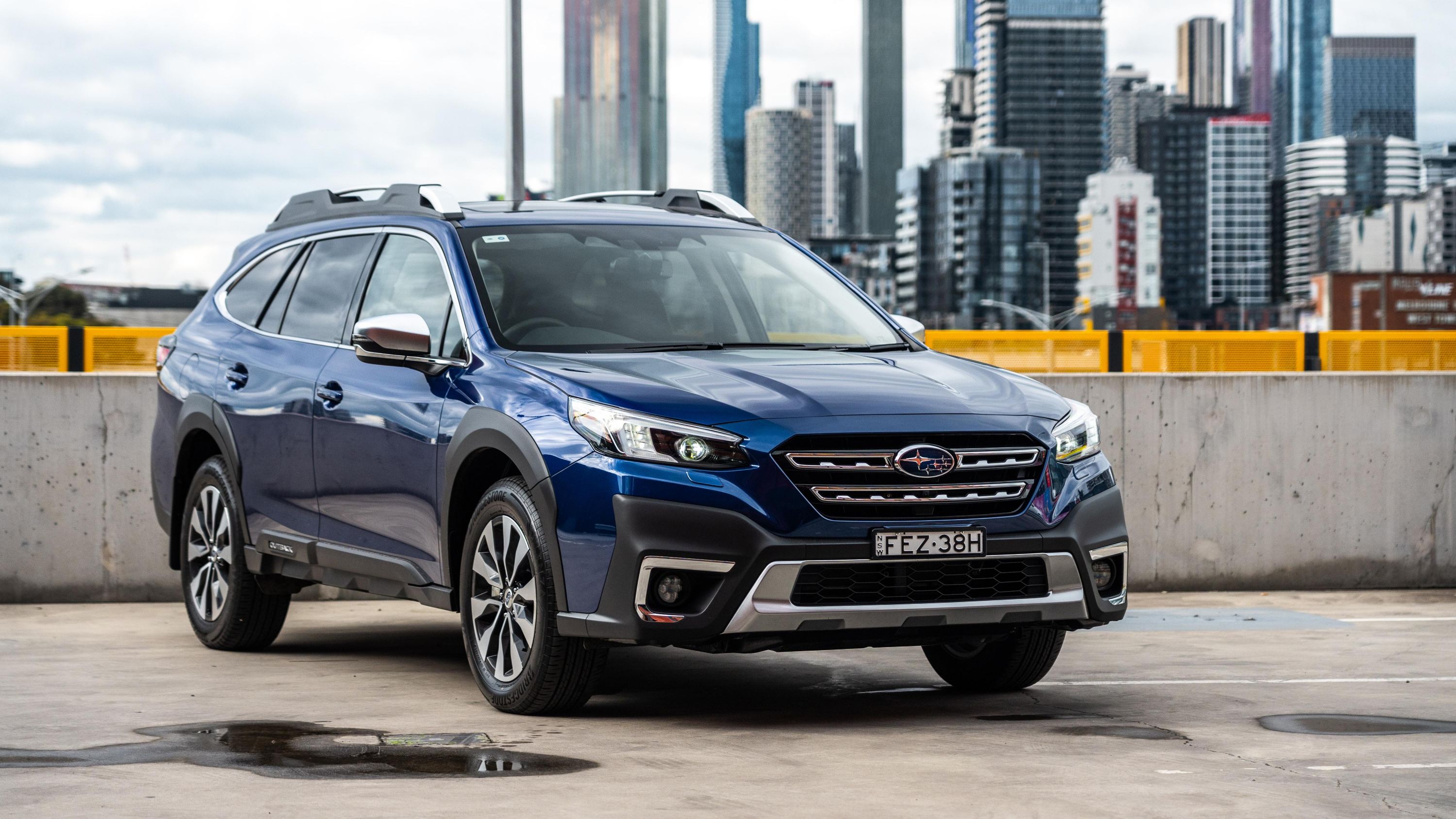
7. **Subaru EJ25 Turbo**The Subaru EJ25 turbo engine, a powerful heart found in iconic models like the WRX, WRX STI, and Forester XT, has long been infamous within automotive circles for its persistent reliability issues. While Subaru has rightfully earned a stellar reputation for producing fun-to-drive, affordable all-wheel-drive turbo cars, the EJ25 has, unfortunately, frustrated countless owners with problems that tend to appear far too early in the engine’s expected lifespan.
At the top of the list of culprits for the EJ25’s woes are its head gaskets. Subaru’s EJ-series engines, in general, are widely known for their susceptibility to blowing head gaskets. The turbocharged EJ25, with its inherently higher cylinder pressures and increased heat output, only amplified this pre-existing problem, making gasket failures an even more common occurrence. These failures often manifested well before the 100,000-mile mark, leading to coolant leaks, chronic overheating, and, inevitably, a long list of expensive repairs.
Another pervasive issue plaguing many EJ25 turbos is excessive oil consumption. If left unchecked, this can lead to severe consequences, including spun bearings and catastrophic bottom-end failures. When you combine this with the well-documented weakness of its piston ringlands, which are prone to cracking under the increased stress of higher boost levels, you’re left with an engine that, despite its performance potential, simply isn’t engineered for robust long-term durability.
Enthusiasts, of course, hold a deep affection for the EJ25, praising its significant tuning potential and its undeniable rally-car heritage. Yet, even they readily admit that reliability has never been its strong suit. It’s a running joke among owners that buying a WRX equipped with this engine can feel like signing up for a second job, purely to cover the inevitable engine rebuilds. In summary, while the EJ25 turbo certainly delivers an exhilarating driving experience, it stands as one of the least dependable turbocharged engines on the market. Unless you’re fully prepared for constant maintenance, or even a complete engine rebuild, it’s an engine that’s perhaps best approached with a healthy dose of skepticism.
Car Model Information: 2018 Subaru WRX Base
Name: Subaru WRX
Caption: 2022 Subaru WRX GT
Aka: Subaru Impreza WRX (1992–2014)
Production: 1992–2014 (Impreza-based models),2015–present (standalone models)
Assembly: Ōta, Gunma
Layout: Front-engine, four-wheel-drive layout
Manufacturer: Subaru
Related: Subaru Levorg,Subaru WRX STI
Class: Sport compact
BodyStyle: Sedan (automobile)
Categories: 2020s cars, All-wheel-drive vehicles, All Wikipedia articles written in British English, All articles with unsourced statements, Articles with short description
Summary: The Subaru WRX is an all-wheel drive sport compact car manufactured by the Japanese automaker Subaru, originally based on the Impreza created for the World Rally Championship in 1992. Subaru claimed the name WRX stands for “World Rally eXperimental”. Starting with the 2015 models, the WRX lineup has been split from the Impreza, with a different body style that is not offered as an optional hatchback/wagon, being introduced as the separate Levorg model.
Get more information about: Subaru WRX
Buying a high-performing used car >>>
Brand: Subaru Model: WRX
Price: $14,980 Mileage: 117,516 mi.
Read more about: Buyer Beware: 10 Sedans That Thrive Or Struggle Post-Warranty – Plus Your Guide to Electrical Issue Protection
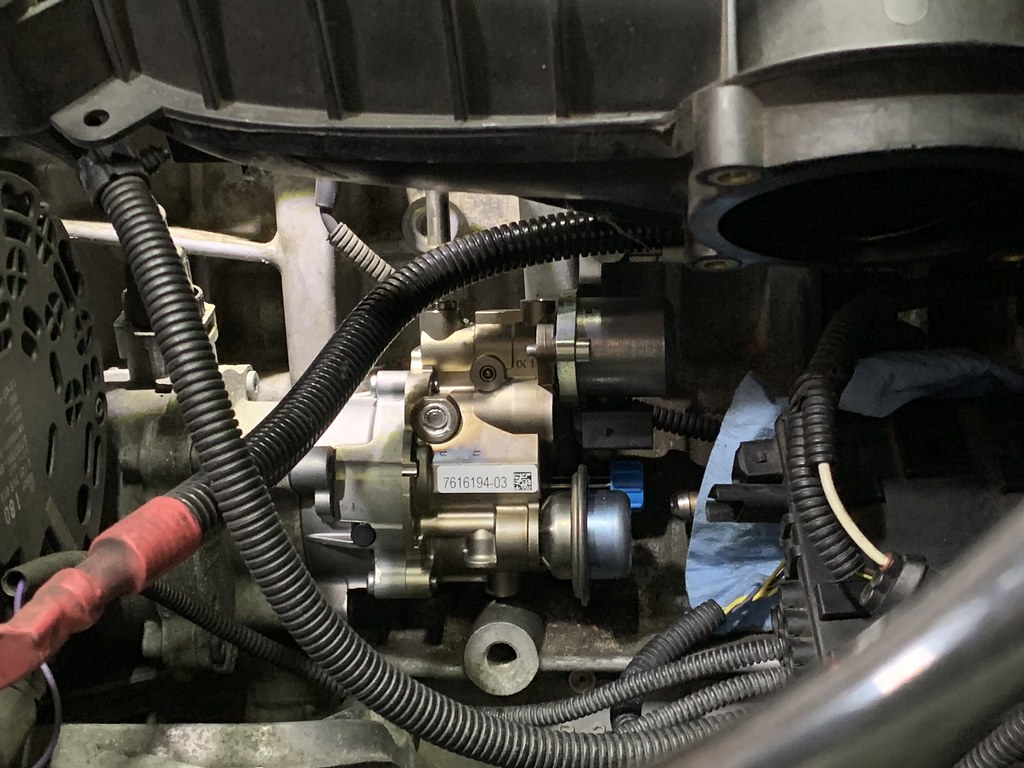
8. **BMW N54**When BMW unveiled its N54 engine in the mid-2000s, it was lauded as a revolutionary achievement. This 3.0-liter twin-turbo inline-six powerhouse found its way into a range of beloved models, from the iconic 335i and 135i to the early 740i. Enthusiasts quickly fell in love with it for its impressive speed, incredible tunability, and the buttery-smooth power delivery that BMW is renowned for. However, despite its initial acclaim, the N54’s reliability track record, unfortunately, proved to be a significant disaster.
The N54 became notoriously plagued by a host of chronic issues, most notably its high-pressure fuel pumps (HPFP). These components failed with such alarming frequency that BMW was compelled to issue multiple widespread recalls to address the problem. Fuel injectors also emerged as a consistent weak point, often leading to frustrating symptoms such as rough idling, persistent misfires, and a noticeable decline in overall engine performance.
Adding to the engine’s woes were significant problems within the turbo system itself. Wastegate rattle, a distinct and irritating noise, and premature turbo failures were extremely common occurrences. The cost of replacing these turbochargers could easily run into thousands of dollars, making repairs a substantial financial burden for owners. It was a disheartening reality for what was otherwise a thrilling engine.
Beyond these major components, the N54 also suffered from severe carbon buildup on its intake valves, a direct consequence of its direct injection design. This issue was so pervasive that owners often had to resort to a specialized cleaning process known as walnut blasting, typically every 50,000 miles, just to keep the engine running smoothly and efficiently. When you factor in weak cooling components and persistent oil leaks, you’re left with an engine that constantly demands attention and can quickly become a significant money pit.
It’s undeniable that the N54 is capable of incredible power output; with proper tuning, many enthusiasts have successfully pushed these engines to well over 500 horsepower. Yet, whether at stock levels or heavily modified, the underlying reliability issues persistently surface. Long-term ownership of an N54-equipped vehicle is often described as a significant gamble, with maintenance costs that tend to pile up at an alarming rate. While the N54 might offer bursts of thrilling performance when it’s running optimally, it has firmly earned its reputation as one of BMW’s least dependable turbocharged engines. For many owners, the fleeting thrill simply isn’t worth the constant stress and financial outlay.
Read more about: Decade Defining Drives: Revisiting the 2010s’ Most Efficient Compact Hatchbacks That Conquered City Streets
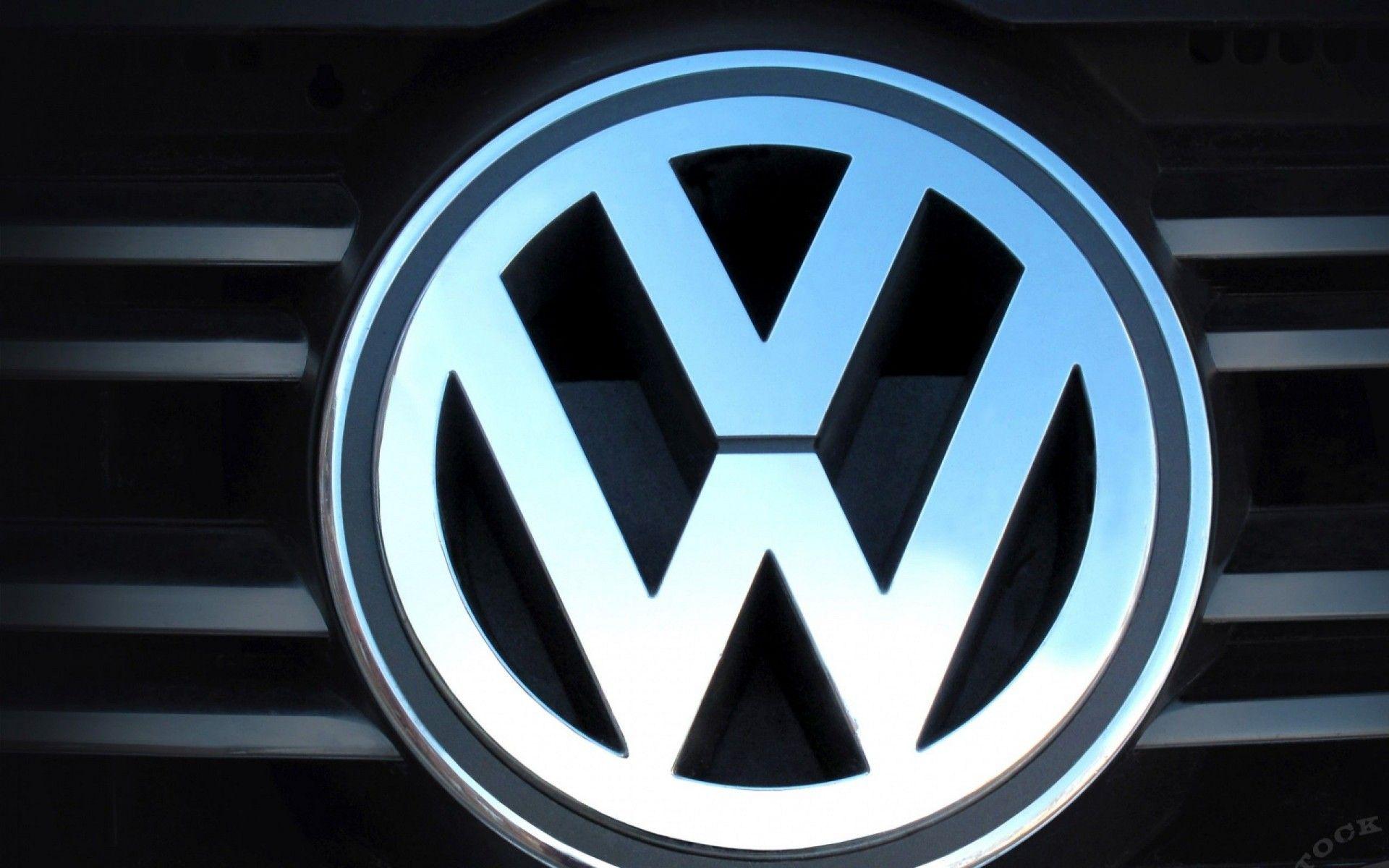
9. **Volkswagen/Audi 2.0T (EA888 Gen 1 & Gen 2)**In a surprising twist, while VW’s older 1.8T engine proved to be remarkably bulletproof, the early generations of its 2.0T (specifically the EA888 Gen 1 and Gen 2) were, unfortunately, a veritable nightmare for reliability. These engines were prolific, powering countless VW and Audi models from the mid-2000s through the early 2010s, and they quickly became notorious for a litany of expensive and frustrating failures that severely impacted owner satisfaction.
Perhaps the most significant and well-documented issue revolved around the timing chain tensioners. The initial designs of these crucial components were inherently prone to failure. When a tensioner inevitably failed, it often led to catastrophic engine damage as the timing chain jumped, causing valves to collide with pistons. Thousands of engines were tragically lost this way, representing a massive expense for owners. Even when timing chains didn’t catastrophically fail, many owners grappled with severe oil consumption problems, an issue so widespread that Volkswagen was compelled to extend warranties and face multiple class-action lawsuits.
The turbochargers themselves were not particularly reliable either, frequently suffering from wastegate issues and premature failures that necessitated costly replacements. Compounding these major problems were a range of other persistent weaknesses, including fragile PCV (Positive Crankcase Ventilation) systems, stubbornly leaky rear main seals, and, due to its direct injection design, pervasive carbon buildup on intake valves. All these issues combined meant that vehicles equipped with these early EA888 engines often spent more time undergoing repairs in the shop than they did reliably on the road.
To their credit, later versions of the EA888 engine (Gen 3 and beyond) underwent significant revisions and largely corrected many of these early reliability issues, making them far more dependable. However, the Gen 1 and Gen 2 2.0Ts stand as stark cautionary tales of what can happen when manufacturers prioritize efficiency and performance metrics without conducting sufficient long-term durability testing. For anyone looking to purchase a used car, the advice regarding VW and Audi models with the early 2.0T is straightforward: avoid them unless there’s indisputable proof that all major, known repairs have already been thoroughly addressed. Otherwise, you’re almost certainly signing up for a future filled with headaches and substantial repair bills.
Car Model Information: 2008 Volkswagen GTI Base
Name: Volkswagen CC
Aka: Volkswagen Passat CC
Manufacturer: Volkswagen
Production: 2008–2016,2010–2018 (China)
Assembly: Emden,Changchun,Kaluga
Successor: Volkswagen Arteon
Class: Compact executive car
BodyStyle: Sedan (automobile)
Layout: Front-engine, front-wheel-drive layout
Platform: Volkswagen Group A platform#PQ46 platform cars
Engine: Turbo fuel stratified injection,Inline-four engine
Transmission: Manual transmission
Wheelbase: 106.7 in
Abbr: on
Length: 188.9 in
Width: 73.1 in
Height: 56.0 in
Related: Volkswagen Passat,Volkswagen Sharan,SEAT Alhambra,Škoda Superb
Designer: Oliver Stefan
Sp: us
ModelYears: 2009–2017
Categories: 2010s cars, All-wheel-drive vehicles, All articles with unsourced statements, Articles with short description, Articles with unsourced statements from March 2023
Summary: The Volkswagen CC, initially sold as the Volkswagen Passat CC, is a car built by German marque Volkswagen from 2008 to 2016. It is a variant of the Volkswagen Passat that trades headroom and cargo space for a coupé-like profile and sweeping roofline. The CC debuted in January 2008, at the North American International Auto Show in Detroit and was discontinued after the 2017 model year.
Volkswagen said the name CC stands for Comfort Coupe, recognizing its combination of a coupe-like profile with four rather than two doors. While based on the Passat, and sharing its wheelbase, the CC is 27 mm (1.06 inches) longer, 50 mm (1.97 inches) lower, and 36 mm (1.42 inches) wider than the Passat.
While the CC has been replaced by the Arteon in most markets, the latter vehicle retains the CC nameplate in China.
Get more information about: Volkswagen CC
Buying a high-performing used car >>>
Brand: Volkswagen Model: 2.0T
Price: $9,875 Mileage: 79,360 mi.
Read more about: Turbocharged Engines Unveiled: Decoding Turbo Lag, Engineering Solutions, and The Legacy of Reliability vs. Catastrophic Failure
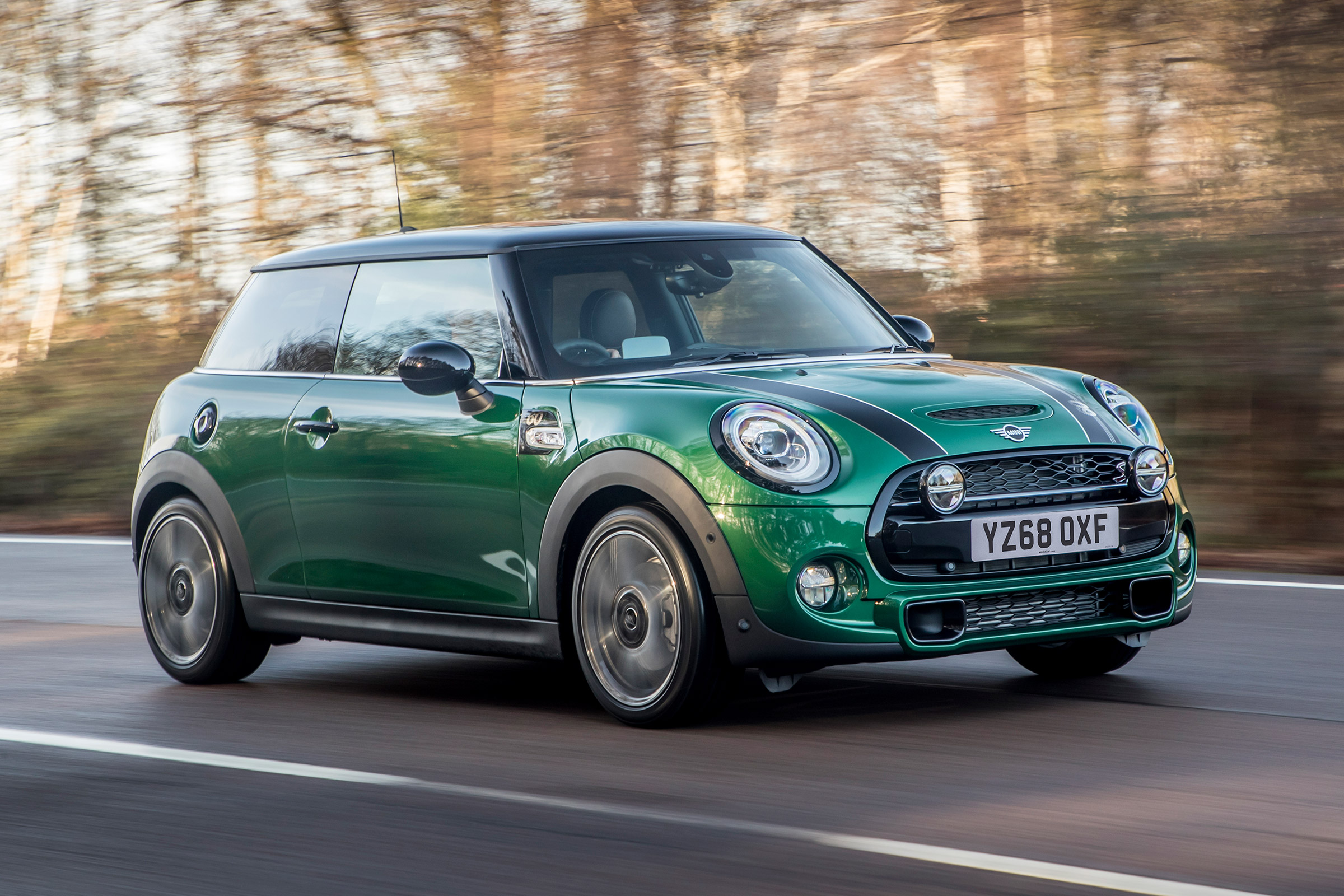
10. **Mini Cooper 1.6L Turbo (Prince Engine)**The 1.6L turbocharged “Prince” engine, found in the lively Mini Cooper S and John Cooper Works models, represents another unfortunate example of turbocharging technology gone wrong. Developed collaboratively between BMW and PSA Peugeot-Citroën, this engine was designed to offer spirited performance in a compact package. However, it quickly gained an unenviable reputation for being persistently unreliable, casting a shadow over the otherwise engaging Mini driving experience.
The most notorious and widespread issue plaguing the Prince engine was the catastrophic failure of its timing chain tensioners. Owners frequently reported hearing a loud rattling noise, affectionately (or perhaps, grimly) dubbed the “death rattle,” which often served as a ominous precursor to a complete and devastating timing chain failure. Repairing or, more often, replacing the entire timing system is an extremely expensive undertaking, sometimes costing nearly as much as the value of the used car itself.
Beyond the timing chain issues, turbocharger failures were also unfortunately common, often linked to deficiencies in the engine’s oil circulation and overall heat management systems. Add to this a list of other persistent problems, including significant carbon buildup from its direct injection design, frequent and stubborn oil leaks, and recurrent water pump issues, and it quickly becomes apparent why the Prince engine was a nightmare for long-term ownership.
What made these problems particularly frustrating for Mini owners was that they frequently surfaced at relatively low mileage, sometimes well under 60,000 miles. For a brand marketed on its fun, stylish, and premium attributes, a constant stream of engine failures left a distinctly sour taste for many owners, undermining the very image Mini sought to project. Yes, a Mini Cooper is undeniably fun to drive when it’s operating correctly, but the 1.6L turbo Prince engine is simply not built for durability. It stands as one of the clearest and most regrettable examples of a turbocharged motor that consistently fails, leaving owners with empty wallets and an abundance of regret.
**The Final Verdict: Navigating the Turbocharged Landscape**
Ultimately, turbocharged engines present something of a double-edged sword for car owners and enthusiasts alike. On one side, you have genuine masterpieces like the Toyota 2JZ-GTE, Nissan RB26DETT, and Mitsubishi 4G63T. These engines are shining examples that prove forced induction absolutely does not have to come at the expense of reliability. They were meticulously overbuilt, designed with exceptional durability as a core principle, and are demonstrably capable of lasting hundreds of thousands of miles, even enduring significant abuse. These motors have rightfully become icons, not solely because of their raw performance, but because owners can place unwavering trust in their ability to keep running strong, year after year.
However, on the other side of this turbocharged coin, you’ve got engines like the Ford 1.6 EcoBoost, the Subaru EJ25, BMW N54, the early generations of the VW/Audi 2.0T, and Mini’s 1.6 Prince engine. These are motors that, while perhaps looking impressive on spec sheets, consistently fail to deliver in the unpredictable real world of long-term ownership. Whether the issue is chronic overheating, debilitating head gasket failures, critically weak timing systems, or poor oil circulation, these engines have a well-established history of letting their owners down.
Many of these problematic engines have even been the subject of widespread recalls and costly lawsuits, while others have simply gained infamy through the endless stream of repair bills they generate. The key takeaway here is unequivocally clear: not all turbo engines are created equal. If you are currently in the market for a turbocharged vehicle, it is absolutely essential to conduct your research thoroughly and diligently. Look beyond the appealing horsepower numbers and the tempting fuel economy ratings; delve deep into real-world reliability reports, spend time on owner forums to understand common issues, and meticulously investigate any known weaknesses specific to that engine.
Sometimes, that seemingly “fun little turbo car” comes with a hidden baggage of headaches and frustrations that you undoubtedly don’t want to deal with. At the same time, it’s crucial not to let the narratives of failure scare you away from turbocharging altogether. The undeniable success stories prove, beyond a shadow of a doubt, that with proper engineering foresight and robust build quality, a turbocharged motor truly can last forever. Whether it’s Toyota’s virtually bulletproof 2JZ, Nissan’s legendary RB26, or even Volvo’s often underappreciated B230FT, these engines are living, breathing proof that boost and exceptional longevity can indeed go hand in hand.
Car Model Information: 2013 MINI Coupe Cooper S
Sp: uk
Caption: 1959 Morris Mini-Minor (first one built)
Name: Mini
Aka: Austin 850,Rover Mini,Austin Cooper,Austin Mini,Austin Partner,Austin Seven,Innocenti Mini,Leyland Mini,Morris 850,Morris Mascot,Morris Mini Minor,Riley Elf,Wolseley 1000 (South Africa),Wolseley Hornet
Layout: Front-engine, front-wheel-drive layout
Manufacturer: British Motor Corporation,British Leyland,Rover Group
Production: 1959–2000 (5.38 million)
Class: City car
BodyStyle: sedan (car),convertible,Station wagon,sedan delivery,coupe utility
Engine: BMC A-series engine,Straight-four engine
Designer: Alec Issigonis,John Sheppard (car designer)
Transmission: 4-speed manual,AP automatic transmission,5-speed manual (optional extra on some later models)
Length: cvt,cvt,cvt
Width: cvt
Height: cvt
Weight: cvt
Wheelbase: cvt,cvt
Related: Mini Moke,Austin Metro,Innocenti Mini,Mini Wildgoose,Mini Marcos
Successor: Austin Metro,Mini Hatch
Assembly: Panmure, New Zealand
Categories: 1960s cars, 1970s cars, 1980s cars, 1990s cars, 2000s cars
Summary: The Mini is a very small two-door, four-seat car, produced for four decades over a single generation, with many names and variants, by the British Motor Corporation (BMC) and its successors British Leyland and the Rover Group, and finally (briefly) under BMW ownership. Minis were built as fastbacks, estates, convertibles, and various other body styles. Minus a brief 1990s hiatus, from 1959 into 2000, an estimated 5.38 million of all variations combined were built, and the Mini’s engines also powered another 2 million Mini Metros, though the Mini eventually outlasted its successor.
Initially, the Mini was marketed under the Austin and Morris names, as the Austin Seven and Morris Mini-Minor; the Austin Seven was renamed Austin Mini in 1962 and Mini became a marque in its own right in 1969. Retrospectively, the car is known as the “Classic Mini” to distinguish it from the modern MINI family of vehicles produced since 2001 by German carmaker BMW, who took ownership of the Mini name following the sale of Rover Group in 2000.
This distinctive two-door car was designed for BMC by Sir Alec Issigonis. Its space-saving transverse engine and front-wheel drive layout – allowing 80% of the area of the car’s floorpan to be used for passengers and luggage – influenced a generation of car makers. The front-wheel-drive, transverse-engine layout were used in many other “supermini” style car designs such as Honda N360 (1967), Nissan Cherry (1970), and Fiat 127 (1971). The layout was also adapted for larger subcompact designs. In 1999, the Mini was voted the second-most influential car of the 20th century, behind the Ford Model T, and ahead of the Citroën DS and Volkswagen Beetle. It is also considered an icon of 1960s British popular culture.
The Mini Mark I had three major UK updates: the Mark II, the Clubman, and the Mark III. Within these was a series of variations, including an estate car, a pick-up, a van, and the Mini Moke, a jeep-like buggy. The performance versions, the Mini Cooper and Cooper “S”, were successful as both race and rally cars, winning the Monte Carlo Rally in 1964, 1965, and 1967. The Mini was manufactured in England at the Longbridge plant in Birmingham located next to BMC’s headquarters and at the former Morris Motors plant at Cowley, as well as in Australia (Victoria Park/Zetland BMC Australia factory) and later also in Spain (Authi), Belgium, Italy (Innocenti, as the Innocenti Mini), Chile, Malta, Portugal, South Africa, Uruguay, Venezuela, and Yugoslavia (IMV). In 1980, British Leyland launched the Mini’s follow-up, the Austin Metro, however the Mini outlasted it and continued to be produced at Longbridge until October 2000.
Get more information about: Mini
Buying a high-performing used car >>>
Brand: Mini Model: Cooper
Price: $11,875 Mileage: 78,956 mi.
Read more about: Turbocharged Engines Unveiled: Decoding Turbo Lag, Engineering Solutions, and The Legacy of Reliability vs. Catastrophic Failure
In the grand scheme of automotive choices, turbo engines can either be your absolute best friend, delivering exhilarating performance and dependable service, or they can quickly become your worst nightmare, relentlessly draining your patience and your wallet. The choice is ultimately yours. Choose wisely, and you’ll undoubtedly enjoy many years of powerful and reliable driving. Choose poorly, and you’ll likely be left wishing you had taken the time to do your homework first.

